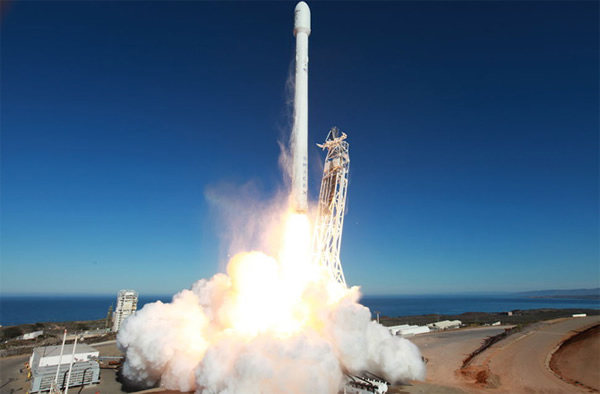SpaceX Want Rockets That Fly Themselves Home
On Sept. 29, SpaceX's upgraded booster, the Falcon 9 v1.1, successfully launched its payload into orbit -- the rocket's first stage also re-ignited, a key test of rocket return technology.
Space Exploration Technologies founder Elon Musk had much to cheer about after the debut flight of the firm’s upgraded Falcon 9 rocket, but it was the booster’s fall back to Earth that got him most excited.
After delivering its payloads into orbit on Sunday, the rocket’s first-stage reignited, a key test toward a booster that can brake its descent back through the atmosphere for a gentle ocean splashdown or precision landing at the launch site.
The first of two engine restarts successfully got the rocket into the lower atmosphere, Musk told reporters after the launch.
But the second ignition was cut short because the rocket was spinning, which causing its fuel supply to be chocked off by centrifugal force.
“It caused the boost stage to run out of propellant … before hitting the water. It hit relatively hard. We recovered portions of the stage, but the most important thing is we now believe we have all the pieces of the puzzle,” Musk said.
In a related program, SpaceX has been testing another Falcon rocket stage called Grasshopper to develop precision takeoff and landing techniques. Combined with Sunday’s tests, engineers now have data covering all the stages of the flight back to Earth.
“We have all the pieces necessary to achieve a full recovery of the boost stage … That’s actually what has got me most excited about this flight,” Musk said.
The boost stage accounts for 75 percent of the rocket’s cost, he added.
The company expects to be able to demonstrate recovery of a Falcon 9 first-stage next year.
SpaceX successfully flew five of its original Falcon 9 rockets, three of which carried Dragon cargo capsules to the International Space Station for NASA, before Sunday’s test flight of the upgraded booster, known as Falcon 9 v1.1.
The rocket, which was launched from a new complex at Vandenberg Air Force Base in California, has engines that are 60 percent more powerful than previous versions, longer fuel tanks, new avionics and software, and other features intended to boost lift capacity and simplify operations for commercial flight services.
SpaceX has a backlog of more than 50 Falcon rocket flights on its manifest, including 10 more cargo runs to the space station and dozens of satellites for commercial operators and foreign governments.
The company also intends to use its Falcon 9 rockets to ferry crews to the space station as early as 2016.(Oct 1, 2013 01:46 PM ET // by Irene Klotz)












